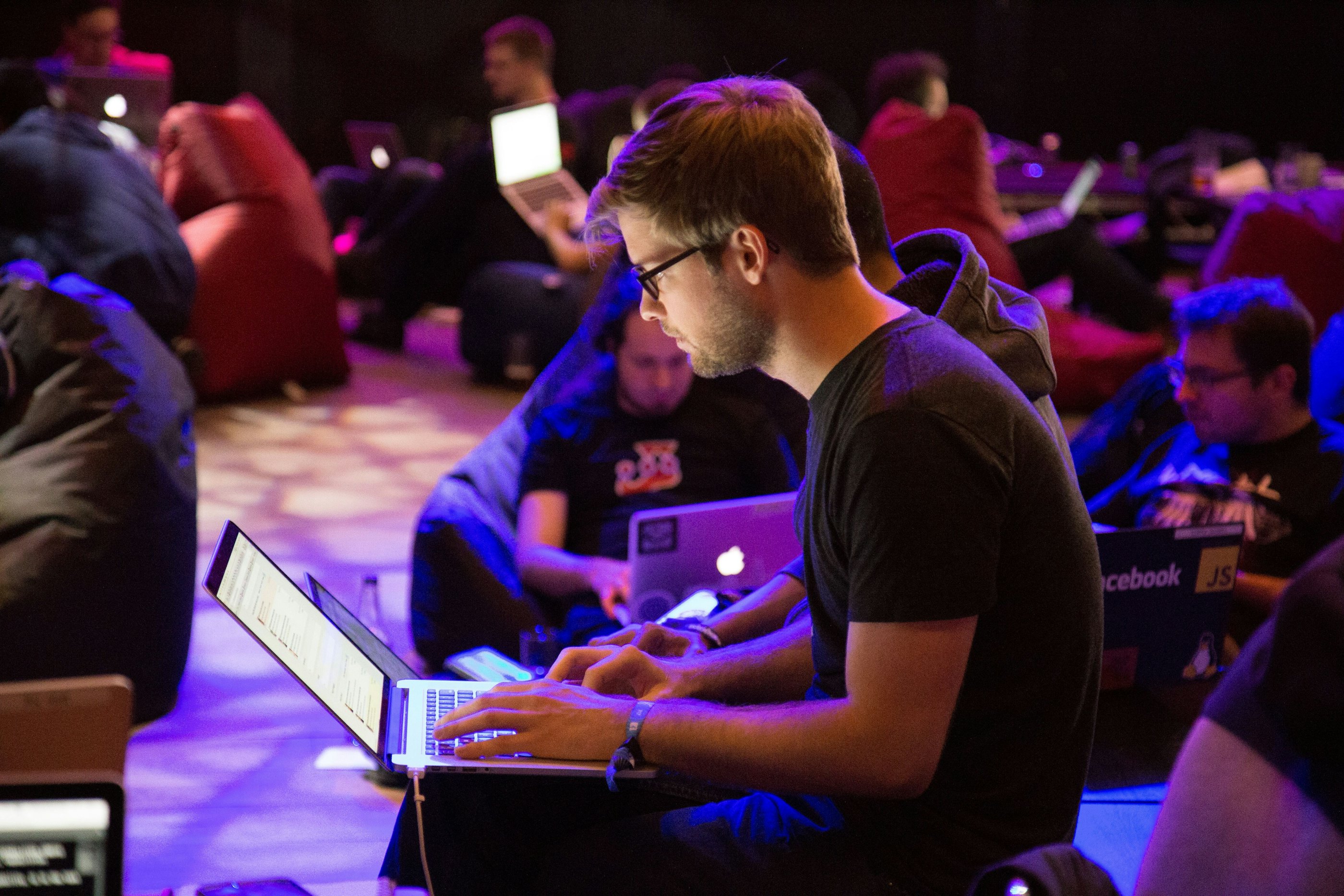2023 was a particularly challenging year in the ever-dynamic world of cybersecurity. Most types of cyberattacks were on the rise, resulting in increased security challenges for organisations around the globe. At the same time, the world had to cope with several geopolitical crises (the wars in Ukraine, and the conflict between Israel and Hamas), whilst AI greatly increased its presence in the realm of cybersecurity.
This article includes a quick recap of the most important issues and developments regarding cybersecurity that happened in the past year. However the majority of the article will deal with the most significant trends affecting our online security in 2024 and beyond. Learn all about the important topics for the upcoming year and how to anticipate the ongoing and upcoming cybersecurity trends and challenges.
2023: cybersecurity trends in review
When we look back at 2023, we see that some predictions held true, whilst other trends took rather unexpected turns. Let us take a look at the most important predictions that materialised and the cybersecurity developments that surprised us.
Building towards a passwordless future
Most tech companies and consultants predicted an increased adoption of passwordless authentication. This trend largely played out as anticipated. Several major tech companies helped accelerate the passwordless future through high-profile implementations. Passwordless sign-in for commercial Azure Active Directory users and Apple’s passkeys in iOS 16 and macOS Ventura are prime examples.
Consumer response has been largely positive, as passwordless systems remove the friction of memorising credentials. We also saw an increased integration of passwordless authentication with zero-trust policies and identity and access management.
Ongoing supply chain problems
As unfortunately expected, supply chain attacks and vulnerabilities persisted in 2023. Several high-profile companies (BA, the BBC, Boots, Okta) fell victim to sophisticated supply chain attacks last year.
Expanding IoT attack surfaces
It wasn’t a surprise that the proliferation of IoT devices would expand the organisation's attack surface. Attackers consistently targeted vulnerable IoT devices to gain network access, leading to increased actions in IoT firmware updating, IoT monitoring, and network segmentation.
Global harmonisation of information, privacy and data regulation
Most tech followers expected a growing and globally carried momentum towards harmonising privacy and data regulations across borders. Although some tentative steps towards this goal were taken, divergent national interests remained a crucial challenge to international information, privacy and data regulation. To this day, the European Union’s GDPR is pretty much one of a kind and remains the most expansive data protection law worldwide.
Unveiling the future: predicted cybersecurity trends for 2024
As 2023 draws to a close and we embark on 2024, the realm of cybersecurity is bound to experience some transformative changes. Time to take a look at the major cybersecurity trends and predictions for the coming year.
The growing presence of AI in security operations
In the slipstream of the success, growing popularity and democratisation of generative AI (ChatGPT anyone?), AI and machine learning are expected to play a more critical role in cybersecurity operations from 2024 onwards. AI’s ever-advancing data analysis capabilities are increasingly used for identifying and predicting cyber threats. ML algorithms are evolving to better recognise and respond to new threats, improving defensive measures over time.
These modern AI algorithms exceed human capacities in the field of threat data collection, threat detection and prevention. Many tech experts expect to see AI algorithms providing real-time threat analysis in 2024, enabling faster and more accurate responses to cyber incidents. ML will likely advance to adapt and update cybersecurity protocols autonomously. This removes the need for time-intensive and sometimes costly manual updates.
However, it's important to note that even as AI takes on a more prominent role, it can't exist without human intelligence. People will always be needed to oversee and guide these AI-driven systems. While AI algorithms excel in tasks like threat data collection and analysis, human experts provide the context and strategic decision-making that machines can't replicate.
We may even witness the emergence of AI-driven security bots in 2024. These smart digital actors are programmed to independently identify and neutralise cyber threats. The result? Network security becomes a more proactive affair, allowing you to detect and neutralise threats earlier than ever before. The growing importance of AI functionalities in the fast-evolving domain of cybersecurity signifies an important shift towards more intelligent and autonomous cybersecurity systems.
Outsourcing to managed solutions
Many companies already rely on external providers for sophisticated and specialised cybersecurity solutions. The reason? It’s often very expensive and difficult to find the right experts and bind them to your organisation in the long run. We predict that a growing number of organisations are going to rely on managed services to build and optimise robust and high-quality security solutions, ranging from a wide array of managed security services to advanced and modular cloud-based security platforms.
Security-as-a-service (SECaaS) and similar solutions allow organisations in various industries to avoid overspending on security services that carry little benefit to their operations. It also gives them full access to knowledgeable security experts and the latest security tools for a fixed and manageable price. With SECaaS in place, your IT team, chief information officer (CIO), and chief technology officer (CTO) can focus on meeting other organisational objectives.
Geopolitical influences
Geopolitical tensions have increased in recent times. The war of attrition between Russia and the Ukraine, the conflict between Israel and Hamas, and the espionage and cybercrime operations that China, Russia, North Korea and Iran continue to undertake to achieve their geopolitical goals: they are all expected to leave their mark on the cybersecurity landscape in 2024.
In 2024, no fewer than 40 national elections will occur worldwide. As threat actors’ motivations stretch beyond financial gain, many cybersecurity experts predict an uptick in attacks targeting entities without profit centres. Examples of such targets are schools, hospitals, public utilities, and other essential services. Cybercriminals will increasingly sell their skills and expertise through ransomware-as-a-service, malware-as-a-service, and DDoS-as-a-service offerings. Intelligence agencies and governments can profit from this commercialisation of cybercrime when targeting their (perceived) enemies.
Mature SASE concepts and frameworks
SASE (secure access service edge) solutions are poised to continue growing in adoption over the next year. According to predictions by Gartner, by 2024 over 40% of enterprises will have explicit strategies in place for SASE adoption compared to just 1% in 2018. As remote work becomes more permanent and cloud-based applications proliferate, SASE concepts and frameworks will become increasingly critical for securing modern network architectures.
The expectation is that:
The increased adoption of multi-cloud environments across SaaS, PaaS and IaaS solutions will accelerate the popularity and further development of SASE concepts, frameworks and tools.
Edge computing will drive remote SASE deployments.
Vendors are going to expand their SASE solution breadth. Single-vendor SASE will probably be a hot commodity in 2024.
The strong emergence of SSE
SSE is part of the SASE framework. The adoption of SSE solutions is expected to accelerate in 2024 as cybersecurity professionals increasingly gravitate to modern, unified platforms and away from siloed point solutions to improve security, cut costs, and simplify security management. The rising popularity of SSE is partially fueled by the evolution of the end user. Gartner calls this the “human-centric workforce” because a lot of modern security protocols and technologies revolve around user identity rather than location. Continuing cloud adoption also puts wind in the sails of SSE, since the technology can provide security from and for the cloud.
Zero trust remains top of mind
The concept of zero-trust security has gained significant momentum in 2022 and 2023, evolving from a niche approach to a fundamental aspect of cybersecurity strategy. This is also related to the fact that zero trust is an important part of SSE. Zero trust should and will remain top of mind in 2024, especially with all the remote workers and the proliferation of devices (both end-user devices and IoT). Some companies will embark on the journey towards a comprehensive zero-trust framework, whilst others will reach the next phase of this operation or even reach the final destination of their zero-trust voyage.
Enhanced focus on mobile security
Mobile devices have become an integral part of both our personal and professional lives. We increasingly rely on them for a multitude of tasks, such as remote work, financial transactions, and videoconferencing. This makes smartphones and tablets attractive targets for cybercriminals who are on the hunt for data or money.
Cybersecurity vendors and providers recognise this and are expected to invest even more money, time and resources in mobile security in 2024. Key mobile security features include strong encryption protocols (which ensure that you’re able to securely transfer data between devices), MFA, and advanced session logging features.
Upcoming NIS2 implementation
NIS2 is on its way. The implementation deadline is set for October 2024. NIS2 is a revised version of the existing NIS Directive on Security of Network and Information Systems. One of the big changes if you compare the new framework with its predecessor is its increased scope. Before, it was aimed at large, essential companies such as power companies and water providers. NIS2 also applies to (smaller) companies that are part of the same value chains.
As a consequence, third-party security risk management increasingly requires attention. Because the new legislation requires more of companies when it comes to data protection, IT infrastructures, and information sharing and also involves stricter monitoring by the EU, many organisation’s security policies will revolve heavily around the NIS2 implementation in 2024.
Consolidation of security vendors
Cybersecurity is becoming an ever more complex affair. The threat landscape is continuously evolving, whilst networks have become more and more complex. In the face of rising operational complexity and increased cyber risks, many organisations (about 75%) want to consolidate their cybersecurity vendors to decrease complexity and improve risk posture.
Dealing with one or only a limited number of security vendors is easier because you have one single point or only a few points of contact. This improves and eases up communication and maintenance. Vendor consolidation often creates the opportunity to drive better pricing discounts from incumbent vendors and their competitors. The consolidation trend has a profound effect on the security vendor landscape. The big ones consolidate their position or grow, while many of the smaller vendors disappear or are digested by the big industry players.
The rise of quantum computing
Quantum computing is on the rise and revolutionises our views on data processing and problem-solving. When we project the rise of quantum computers on the world of cybersecurity, we see that quantum computing presents both opportunities and challenges. The main challenge? Because of their enormous power and abilities, quantum computers have the ability to rapidly break traditional encryption methods, such as RSA and ECC, making many existing (and now perfectly safe) security systems vulnerable.
On the other hand, the immense processing power of quantum computers also offers great potential for strengthening and perfecting cybersecurity measures. For example, quantum computing can enhance encryption methods, develop more sophisticated algorithms for detecting cyber threats, and efficiently manage large-scale, secure data operations.
Nomios: secure and connected
There is one thing that all the cybersecurity trends of 2024 have in common: modern organisations do not only want to use new and innovative technologies; they need them. They look for solutions that help push their business forward. Typically, security is often an afterthought.
That is where Nomios comes in. While you build a new system or redesign your existing ones, we can proactively help you with security issues and bridge the gap between business and IT security. At Nomios, we are focused on achieving long-term results and building playbooks for incident response. With over sixteen years of expertise in network and security, our approach is both strategic and proactive. Our security operations centre (SOC) and MDR services are not just monitoring systems; they are the epicentres of advanced threat detection, utilising state-of-the-art SIEM and SOAR technologies, enhanced by the latest breakthroughs in threat intelligence and machine learning.
Would you like to find out more about our services? Then be sure to contact one of our network and security experts today. We’re more than happy to make your acquaintance!
Do you want to know more about this topic?
Our experts and sales teams are at your service. Leave your contact information and we will get back to you shortly.

Continue reading about cybersecurity

SOC Cybersecurity
Navigating the 2024 cybersecurity landscape: Key trends in SOC security
A security operations centre (SOC) offers the security tools and knowledge that you need to keep your IT environment safe. Read all about the SOC security trends of 2024.

Avinash Shet

Cybersecurity
Top cybersecurity companies to watch in 2024
We selected the top cybersecurity companies to watch in 2024, who have successfully differentiated themselves from other players in the market.

Mohamed El Haddouchi

SIEM
The benefits of outsourcing SIEM management
Explore the perks of SIEM outsourcing: scalability, expertise, cost savings, and continuous monitoring for superior cybersecurity.

Parm Dhillon




